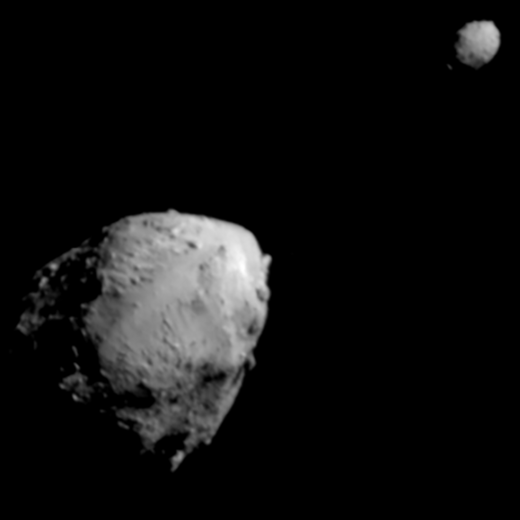On 7 October 2024 at 16:52 Italian time, the European Space Agency's (ESA) Hera mission was launched. It will have the important task of studying the asteroid Dimorphos, which NASA's DART probe had already impacted in September 2022, when it impacted Dimorphos, the small orbiting moon of a binary asteroid system known as Didymos, diverting its orbit. The objective of the Hera mission is to analyse the effectiveness of asteroid deflection, a crucial strategy for planetary defence.
 Didymos and Dimorphos captured by DART.
Didymos and Dimorphos captured by DART.
Inaf is collaborating on the mission with three instruments: the Aspect spectrometer, the Tiri infrared camera and the VISTA (Volatile In Situ Thermogravimeter Analyser) instrument, a sensor dedicated to analysing the dust environment of the Didymos-Dimorphos system. The scientific head of VISTA is Ernesto Palomba, a researcher at IAPS-INAF, who tells us that ‘in a few months we will have the first data that will allow us to understand in detail the situation of the asteroid system and its dust raised after the impact of the Dart mission. All that remains to be done is to wait, because this information will be crucial for understanding the cohesion of these celestial bodies, with a view to deflecting them from potentially dangerous orbits.

